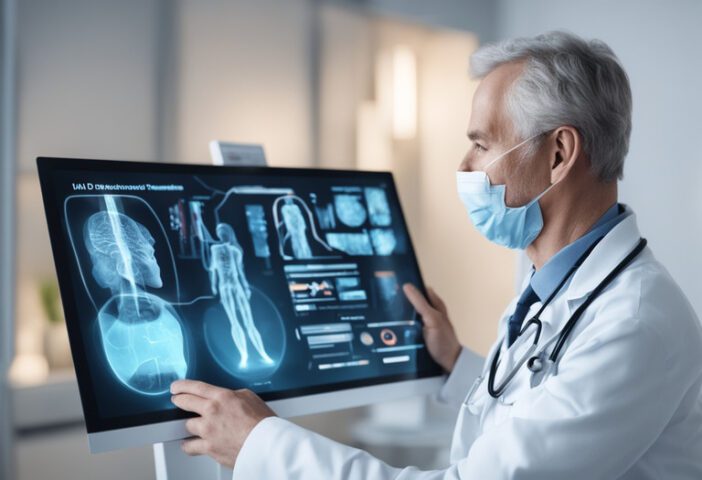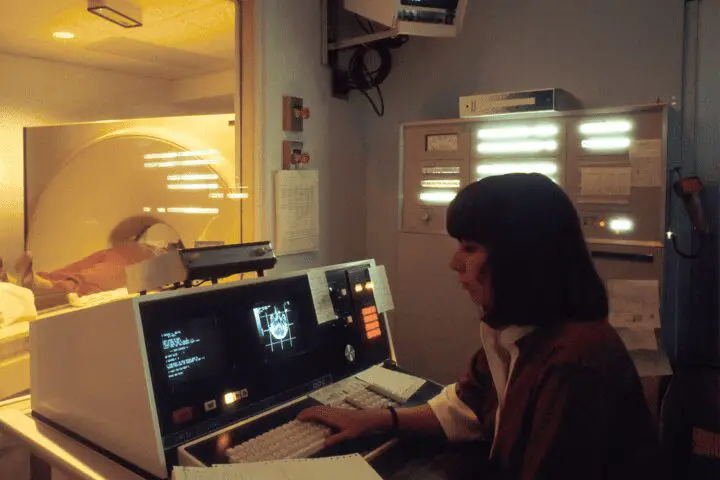With the rapid pace of development in the medical field, telemedicine has been at the forefront of innovation. Digital technology has brought telemedicine to a stage where, with convenience, efficiency, and cost-effectiveness in care delivery, it is a game-changing service for both patients and health practitioners. This article explores the shift occurring in healthcare, the associated positives and cons of telehealth, and its future prospects.
What Is Telemedicine?
Telemedicine refers to the delivery of healthcare from a distance through the use of specific technologies. Patients can reach doctors and other professionals from the comfort of their homes or offices via video chats, phone consultations, and mobile applications. This technique has come into enormous demand during the COVID-19 pandemic, as social distancing and lockdown conditions have prevented individuals from attending clinics and hospitals.


Services Included in Telemedicine
Telehealth is a broad term that comprises services such as:
- Virtual consultations with a physician
- Remote monitoring of chronic conditions
- Psychological treatment
- Refills and follow-up consultations
The Rise of Telemedicine: Why It’s Booming
The usage of telehealth has risen lately, and here’s why. Below are the key reasons for its growth:
1. Convenience and Accessibility
Telemedicine removes transportation barriers, making healthcare accessible in rural or poorly served areas. Patients can consult with healthcare providers without leaving their living rooms, significantly reducing travel time.
2. Cost-Efficiency
Virtual consultations tend to be less expensive than facility-based appointments. Patients save on travel costs, while healthcare professionals can streamline overheads into productive resources.
3. Improvement in Value-Based Care
Telemedicine enables routine follow-ups and management of long-term illnesses, such as diabetes and hypertension, preventing complications and improving health outcomes.
4. Technological Advancement
The development of user-friendly telehealth platforms, mobile phones, and wearable gadgets has made telehealth more accessible and effective.


Advantages of Telemedicine
Due to the various benefits it delivers to both patients and practitioners, telehealth has become increasingly popular. Let’s explore some of these advantages in detail:
For Patients
- Convenience: Reduces travel and long queue difficulties.
- Access to Specialists: Patients can consult with professionals regardless of their location.
- Time-Saving: Virtual appointments are generally shorter and more flexible.
- Privacy: Patients can discuss sensitive health matters from the privacy of their homes.
For Healthcare Providers
- Efficiency: Doctors can see more patients in less time.
- Reduced No-Shows: Virtual appointments have lower cancellation rates.
- Expanded Reach: Providers can offer services to a broader audience.
- Better Patient Engagement: Telehealth fosters regular follow-ups and communication.

Challenges of Telemedicine
While telehealth offers numerous benefits, it is not without its challenges. Some of the major ones include:
1. Technological Barriers
Not all patients possess smartphones, computers, or reliable internet connectivity. This can limit access to telehealth, particularly among low-income groups.
2. Privacy Concerns
Digital platforms face challenges related to data security and patient privacy. Healthcare professionals must ensure compliance with regulations such as HIPAA.
3. Limitations to Physical Examination
Certain conditions require in-person examinations, which telehealth cannot fully replace.
4. Reimbursement Issues
Insurance coverage for telehealth varies greatly, and some healthcare providers face difficulties in getting reimbursed.


How Telehealth Works in Real Life
Telemedicine is making a difference in many domains of healthcare. Here are a few examples:
1. Mental Health Services
Platforms such as BetterHelp and Talkspace offer online therapy sessions, making mental health services more accessible.
2. Management of Chronic Diseases
Patients with diabetes, heart disease, or asthma can use wearable gadgets to monitor their health and share data with specialists in real-time.
3. Rural Healthcare
Telemedicine bridges the gap for patients in remote areas, providing access to specialists that are not available locally.
The Future of Telehealth
The future of telemedicine is promising, with various developments shaping its trajectory:
1. Integration with AI and Machine Learning
AI will analyze patient data to generate treatment recommendations and potentially assist in more accurate diagnoses.
2. More Wearable Technology
Wearables like smartwatches and fitness trackers will play an increasingly important role in remote patient monitoring.
3. Increased Insurance Coverage
As telehealth becomes more mainstream, insurance companies are likely to expand coverage for virtual consultations.
4. Global Adoption
Virtual care has the potential to transform healthcare delivery worldwide, particularly in nations with limited medical infrastructure.


How to Get Started with Telemedicine
If you’re new to virtual care, here’s how you can get started:
- Find a Platform: Search for a relevant virtual care app or website.
- Check Insurance Coverage: Verify if virtual consultations are covered by your insurance.
- Prepare for Your Appointment: Have your medical history and any necessary paperwork ready.
- Test Your Technology: Ensure that your device, internet connection, and camera are functioning properly.
Telemedicine has gradually revolutionized the outlook and delivery of healthcare services. With its convenience, cost savings, and improved outcomes, virtual healthcare is becoming an integral part of the medical landscape. As technology continues to advance, telemedicine’s role will only grow, shaping the future of healthcare.
Now is the time for both patients and doctors to embrace this innovative strategy and reap the benefits of virtual care.































What an insightful article! Your ability to break down complex topics into easily understandable points is truly commendable. I appreciate the thorough research and the engaging writing style that keeps readers hooked from start to finish. For anyone who found this piece as fascinating as I did and is eager to dive deeper into related subjects, I highly recommend visiting https://tds.rida.tokyo/com. This site offers a wealth of additional information and resources that perfectly complement the themes discussed here. Thank you for sharing your knowledge and providing such valuable content. I look forward to reading more of your work in the future!
This article offers a fascinating perspective on the subject. The depth of research and clarity in presentation make it a valuable read for anyone interested in this topic. It’s refreshing to see such well-articulated insights that not only inform but also provoke thoughtful discussion. I particularly appreciated the way the author connected various aspects to provide a comprehensive understanding. It’s clear that a lot of effort went into compiling this piece, and it certainly pays off. Looking forward to reading more from this author and hearing other readers’ thoughts. Keep up the excellent work!
Fantastic article! I appreciate how clearly you explained the topic. Your insights are both informative and thought-provoking. I’m curious about your thoughts on the future implications of this. How do you see this evolving over time? Looking forward to more discussions and perspectives from others. Thanks for sharing!
Great article! I found your perspective on this topic both enlightening and thought-provoking. The way you break down complex ideas into understandable insights is truly commendable. It’s interesting to see how these developments could shape our future. I’m particularly intrigued by your point about potential challenges and would love to dive deeper into that.
For those who are interested in exploring this topic further, I recommend checking out this resource for more detailed information: comprehensive guide. It offers additional insights that complement what’s discussed here.
Looking forward to hearing others’ thoughts and continuing this discussion. Thanks for sharing such valuable information!
Great article! I appreciate the clear and insightful perspective you’ve shared. It’s fascinating to see how this topic is developing. For those interested in diving deeper, I found an excellent resource that expands on these ideas: check it out here. Looking forward to hearing others’ thoughts and continuing the discussion!
I will immediately snatch your rss feed
as I can’t find your email subscription hyperlink or e-newsletter service.
Do you’ve any? Please let me recognize in order that I may just subscribe.
Thanks.
Review my blog post – omnihack
I will right away take hold of your rss as I can not find your e-mail subscription link or newsletter service. Do you’ve any? Please permit me recognise in order that I may subscribe. Thanks.